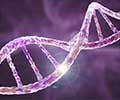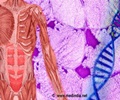A new study on mice, conducted by UT Southwestern Medical Center researchers has found that mutations in two genes, that regulate electrical excitability in a portion of the brain
Mutations in two genes responsible for electrical excitability in a portion of the brain involved in sleep can give rise to an insomnia-like disorder in mice, UT Southwestern Medical Center researchers have found.
The scientists can make use of these findings for a better understanding of the disorder and can also lead them to develop an animal model for devising new treatments."This is one of the most dramatic sleep-disturbance mutations. The mice sleep half as much as normal mice," said Dr. Rolf Joho, associate professor of neuroscience and senior author of the paper.
It was found that the mutant mice had a condition similar to sleep maintenance insomnia, in which sufferers can get to sleep, but don't remain at rest for long.
"We're trying to look at where in the brain this originates. The same mechanism could be involved in many neurophysiological disorders," said Dr. Joho.
The researchers directed their study towards two genes that encode molecules known as ion channels. An ion channel is a pore covering a cell's membrane, opening and closing to allow charged atoms, or ions, to cross the membrane. The coordinated opening and closing of various ion channels enables nerve cells to carry electrical signals.
In this study, two channels that allow potassium ions to cross the cell membrane were examined. The researchers genetically engineered mice to have defects in the ion channels Kv3.1 and Kv3.3, which normally open and close much faster than other potassium channels.
Advertisement
They discovered that the mutant mice slept only 50 percent to 60 percent as much as normal mice. The scientists measured their brain waves and it was shown that they entered slow-wave sleep, but only for short periods before waking again. However, it was found that the mice did not readily get restful sleep even after sleep deprivation.
The study appears online in the recent issue of The Journal of Neuroscience.
Source-ANI
RAS/L











